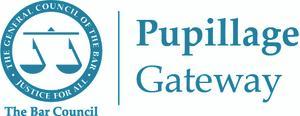
Those of you who are familiar with the Pupillage Gateway will know that your (paid and voluntary) employment and work experience will remain the same for each Authorised Education and Training Organisations (AETO) you apply to. However, this shouldn’t necessarily be viewed as a negative because it essentially forces you to exercise good judgment and ensure that you are only including those experiences that are relevant to your application.
You should approach this section in the same way you would a piece of written or oral advocacy – be selective, concise, and persuade the person who is marking your application that your roles and responsibilities are demonstrative of your ability to become an effective barrister. Consider carefully how you can draw out key skills from your experiences outside of the legal industry and apply them to the Bar. For example, if you have worked in a customer service role in the hospitality industry, you can talk about how you are able to work with a variety of people, in a stressful and highly pressured environment, both of which are relevant to the role of a barrister.
Ask yourself whether you really need to include every mini pupillage or shadowing opportunity, or if you can simply include an example of each of the ones that is relevant to the area(s) of law that you are pursuing. For those you do include, explain what you observed and learned during your placement, and be prepared to expand upon this in an interview.
The most important thing to remember when writing your application as a whole, but with this section in particular, is that this is not an exam.
There are no set examples or phrases that chambers are looking for when assessing your application. To secure interviews applicants must be able to demonstrate both that they have sufficient insight into the role of a barrister to know what skills are important, and that they are able to demonstrate that they have those skills through the experience that they have and the way that they write about that experience. There are nearly limitless ways in which applicants can do that, and it doesn’t always include examples that one would typically expect on pupillage application forms. For example, most candidates have completed mini pupillages and include references to them on their form, but some candidates who have not completed mini pupillages do still secure interviews. In 2022, 8.7% of applicants without mini pupillages or work experience with an AETO progressed to interview according to the Pupillage Gateway Report 2022. Equally, candidates should feel free to include examples which are not strictly work experience, but which may nevertheless have provided them with relevant experience and insight, such as informal court visits, jury service, or other experiences of litigation or courts. Ultimately, candidates who have the insight, experience and skills to secure interviews find ways to demonstrate that on the application form.
To maximise your time and set yourself up for success, start your application early. Here’s how:
- You can create an account on the Pupillage Gateway and add to, or edit, your education, employment, and work experience history at any time.
- The Sample Application Form on the website enables you to prepare for the standardised questions you will be asked, and during the advertisement window you will be able to view and consider the bespoke questions that the Authorised Education and Training Organisations (‘AETOs’) that are using the Pupillage Gateway to manage their respective recruitment processes are posing.
- When preparing your answers, make sure that you make note of any character or word limits, and apply them accordingly. The character limits on the Pupillage Gateway include typographical symbols and spaces, so be careful to count them as part of your answer. Whether you write in bullet points or prose is a matter for you and the best format to use might depend on which section of the application form you are working on, but both approaches have been used successfully by previous applicants.
Further support
For further information about how to navigate the Pupillage Gateway, please consult the Applicant User Guide and FAQ on the website. If you have a technical question relating to the site that neither address, you can contact the Bar Council Services Team for assistance at [email protected].